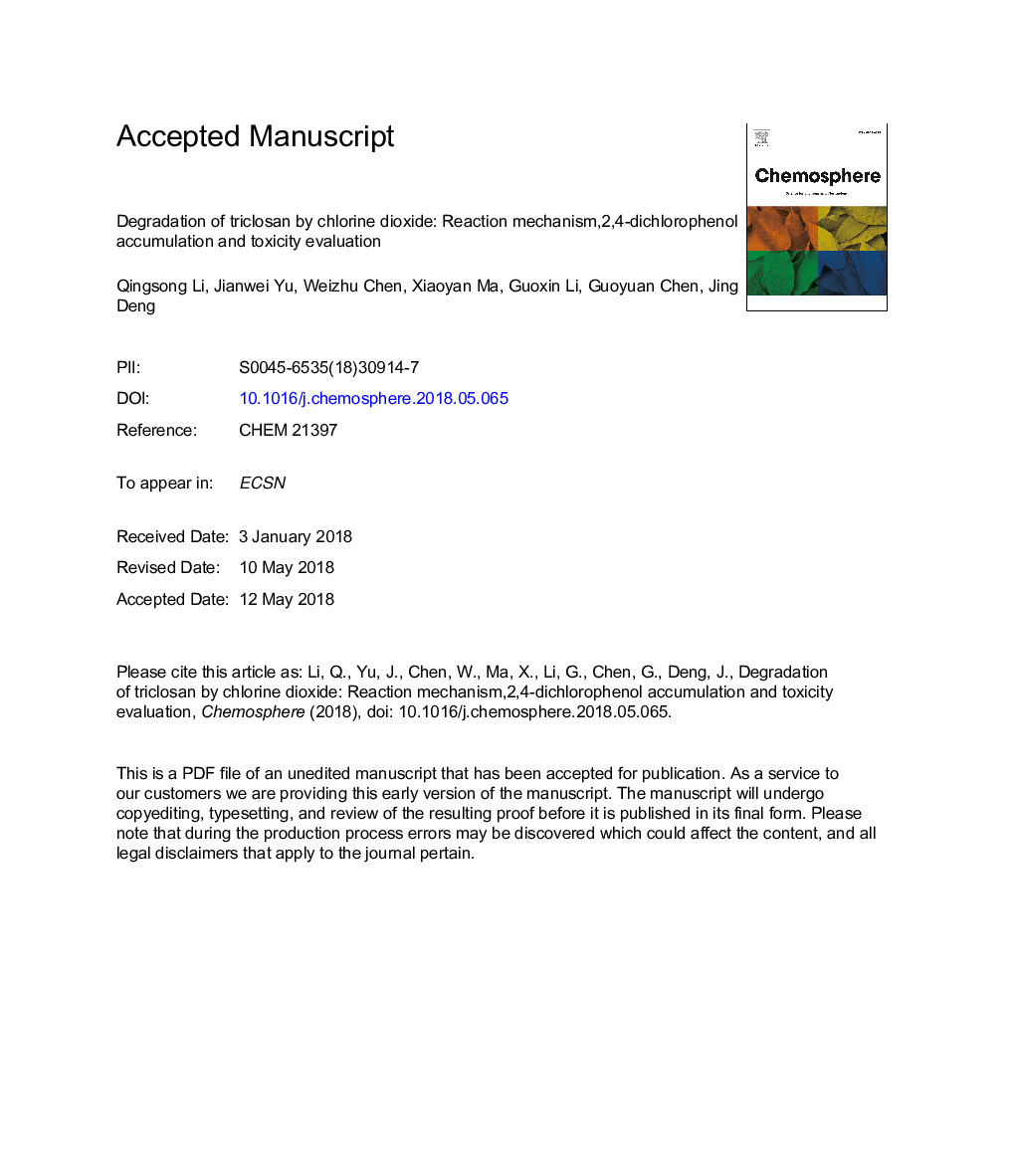| کد مقاله | کد نشریه | سال انتشار | مقاله انگلیسی | نسخه تمام متن |
|---|---|---|---|---|
| 8850987 | 1618764 | 2018 | 26 صفحه PDF | دانلود رایگان |
عنوان انگلیسی مقاله ISI
Degradation of triclosan by chlorine dioxide: Reaction mechanism,2,4-dichlorophenol accumulation and toxicity evaluation
ترجمه فارسی عنوان
تجزیه تریکلوسان توسط دی اکسید کلر: مکانیزم واکنش، تجمع 2،4-دی کورورفنول و ارزیابی سمیت
دانلود مقاله + سفارش ترجمه
دانلود مقاله ISI انگلیسی
رایگان برای ایرانیان
کلمات کلیدی
سمی بودن تریکلوزان، دی اکسید کلر، واسطه های تجزیه کننده،
موضوعات مرتبط
علوم زیستی و بیوفناوری
علوم محیط زیست
شیمی زیست محیطی
چکیده انگلیسی
The mechanism and toxicity of TCS degradation by ClO2 was investigated. Intermediate products during the oxidation process were identified by GC/MS and LC/MS. A microtox bioassay and a SOS/umu assay were employed to evaluate the acute toxicity and genotoxicity of the resulting solutions during the chlorination process. The results showed that the reaction between TCS and ClO2 was of second-order overall. The pseudo first-order rate constants (kobs) exhibited significant dependence on solution pH and chlorine dioxide concentration, with the apparent second-order rate constant, kapp, being 7.07â¯Ãâ¯104â¯Mâ1sâ1 in the pH range of 6.80-7.02. TCS decomposition was accompanied by the accumulation of 2,4-dichlorophenol (2,4-DCP), and the maximum molar yield ratios of 2,4-DCP/TCS were in the range of 31.71%-35.43%. The major intermediates identified were 2,7/2,8-dichlorodibenzop-dioxin (2,7/2.8-Cl2DD), 2,4-DCP, 2,4,6-trichlorophenol (2,4,6-TCP), tetraclosan and pentaclosan. The proposed mechanism for TCS oxidation involved the cleavage of the ether link in TCS, chlorination of the phenolic ring and ring closure of a single TCS molecule. The transformation and degradation of TCS led to reduction of the acute toxicity and genotoxicity. However, irregular fluctuations in the toxicity changes indicated that the oxidation of TCS was not a simultaneous detoxification process.
ناشر
Database: Elsevier - ScienceDirect (ساینس دایرکت)
Journal: Chemosphere - Volume 207, September 2018, Pages 449-456
Journal: Chemosphere - Volume 207, September 2018, Pages 449-456
نویسندگان
Qingsong Li, Jianwei Yu, Weizhu Chen, Xiaoyan Ma, Guoxin Li, Guoyuan Chen, Jing Deng,
